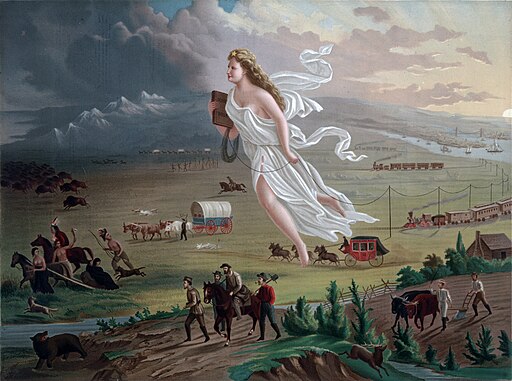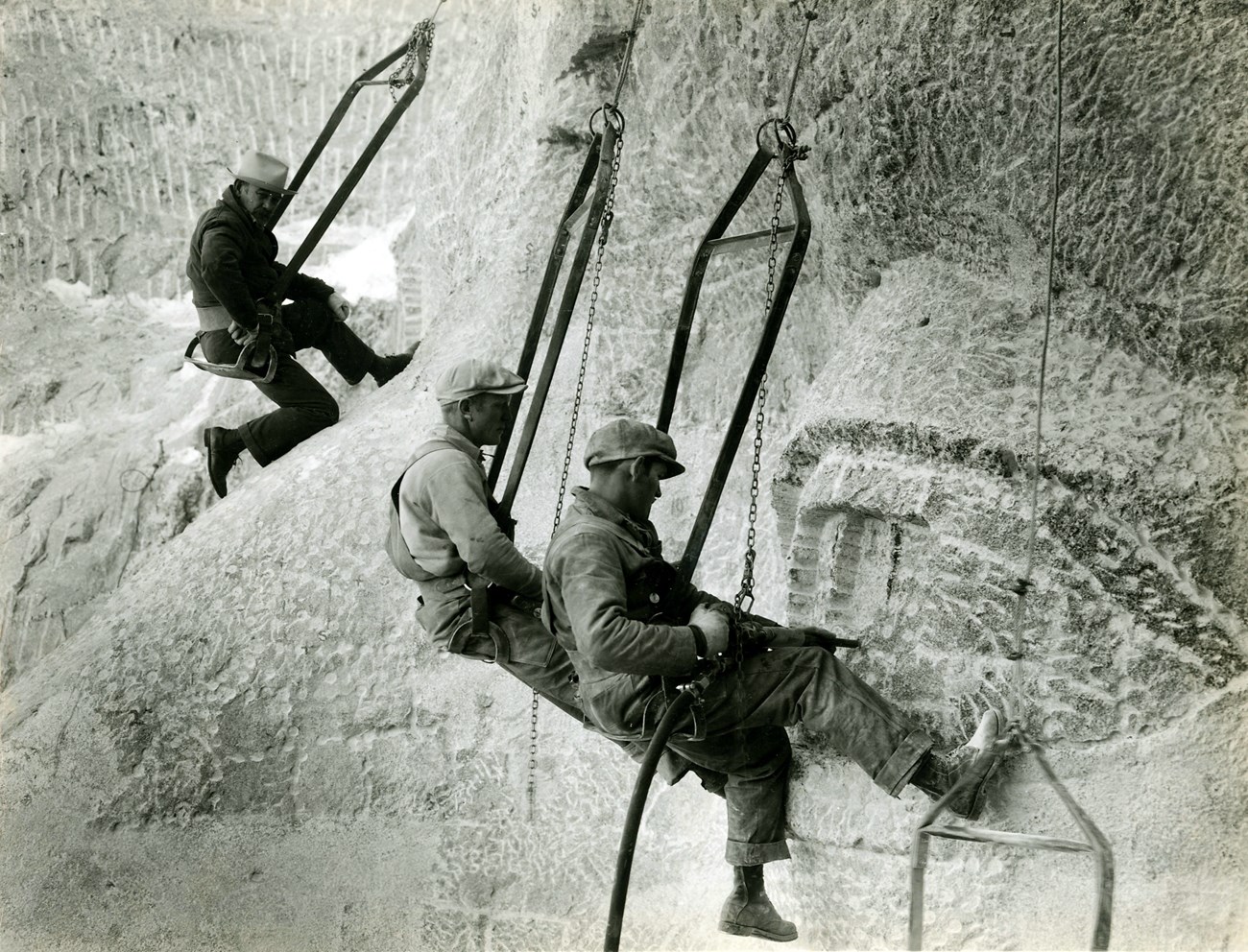
Historian Doane Robinson had a vision; he wanted to see the great men of the “Old West” carved at monumental scale in the Black Hills of South Dakota. They would be able to take advantage of this new craze of automobile road trips across the West with colossal sculptures of Lewis and Clark, Sacagawea, Buffalo Bill Cody, Crazy Horse, and Red Cloud.
He had heard of a sculptor working near Atlanta, Georgia on a huge project similar to what he had envisioned. The sculptor, Gutzon Borglum, paused his work at the Ku Klux Klan member-funded Shrine to the Confederacy (later named the Stone Mountain Monument) to travel to South Dakota and discuss Robinson’s plans.

American Progress by John Gast is an allegorical representation of westward expansion including the displacement of Native Americans (left), 1872


Today, Mount Rushmore remains a popular tourist destination as well as a symbol of the United State’s complicated history with Native nations. Have you been to Mount Rushmore? What do you think should happen to it? Want to learn even more about the controversial colossal sculptures? Learn about the nearby Crazy Horse Memorial.
Interested in more resources for teaching Native American history? Look here.

